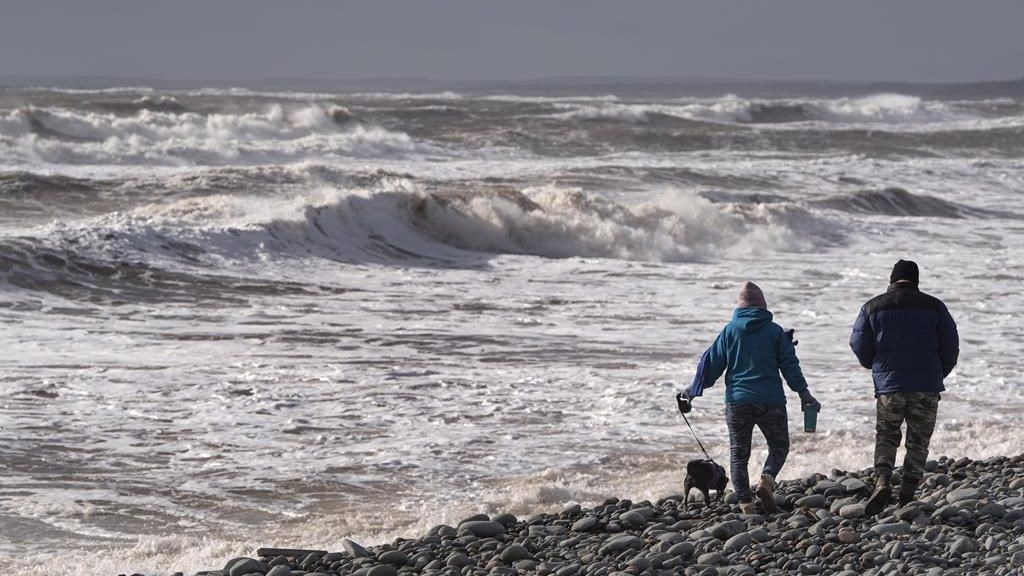In a huge relief to investors, New York Stock Exchange will open after two-day storm shutdown
Posted Oct 30, 2012 09:42:20 PM.
This article is more than 5 years old.
NEW YORK, N.Y. – The New York Stock Exchange will open on Wednesday — because it had to open.
In a bit of welcome news for fund managers, investors and even the economy, the company that operates the iconic exchange at 11 Wall Street announced it would not extend its trading shutdown to a third day.
Wall Street experts had feared that another delay because of Hurricane Sandy would have meant a dangerous back-up of customer orders to buy and sell stock. It also could have dealt a blow to the image of U.S. markets, already damaged by investor distrust, sudden market swings and a series of trading glitches, including the botched IPO of Facebook.
“The world is used to seeing the financial markets through the lens of the floor of New York Stock Exchange,” said Larry Leibowtiz, chief operating officer of NYSE Euronext, which operates the exchange. “It gives them a sense of comfort.”
The New York Stock Exchange said its building and trading floor are fully operational and that normal trading will resume Wednesday at the usual starting time of 9:30 a.m. Since power is out in much of downtown Manhattan, the company said it will run the exchange using its own backup generators, a first.
The closing on Tuesday marked the first time since 1888 that the NYSE halted trading for two consecutive days because of weather. As the NYSE staff scrambled Tuesday to make sure that that 124-year record wouldn’t be surpassed by another day of delay, there were reports on the Internet that the exchange floor had flooded.
It was a false alarm.
The exchange also said that a key data centre in New Jersey housing computers used to trade stocks was in good condition after the storm and would be fully up and running Wednesday.
Mark Travis, president of Intrepid Capital Funds in Jacksonville Beach, Fla., said he was worried that the longer markets remained closed, the greater the backlog of pending trades that would need to be cleared when normal trading resumed.
“You build up pressure when you keep people out of the markets,” Travis said. “Trading volume that may normally happen in a two-day period could get compressed into an hour or two when markets reopen.”
Add to that Hurricane Sandy’s timing, which was awful for the exchange. Instead of arriving on a weekend when the exchange is closed, it blasted into Manhattan on a Monday, and the start of a crucial week, too.
This week is the last full one before the presidential election. What’s more, the government publishes a key report Friday that traders like to bet ahead of — October’s unemployment figures.
Another wrinkle: Wednesday is the last day of the month, which is when traders and fund managers look to stock markets for final prices to value holdings for reports they’re required to send to investors and regulators.
“They need to have current prices for their holdings,” said Peter Jankovskis, co-chief investment officer at Oakbrook Investments in Chicago. “It’s a positive that they are reopening the market.”
Jim Paulsen, chief strategist at Wells Capital Management, agreed, but for a different reason — the economy.
“It’s not just about trading; it’s about confidence,” Paulsen said. “We’re watching these horrific images of the storm, and people are thinking whether they should go ahead with that big purchase they were thinking about. It doesn’t do any good to have another day with headlines saying the U.S can’t figure out how to open its stock exchange.”
The exchange spent much of Tuesday testing its trading systems using its all-electronic Arca system. But Leibowitz, the chief operating officer, said there would be enough traders and market makers on the floor of the exchange tomorrow — 100 or so, he estimated. He said many are staying in nearby hotels.
The exchange also tested to see whether fuel trucks could get to the exchange despite flooded highways, tunnels and bridges. Leibowitz said the trucks were able to arrive, and the exchange took the opportunity to top off the tanks for the backup generators. The exchange can operate for 40 hours on backup generators before refuelling .
“It’s not like your car,” he said. “You don’t wait until fuel light goes on.”
Thomas Caldwell, chairman of Caldwell Securities, said he was concerned there would be a big news event that would change investors’ opinions about stocks during the shutdown. That could have led to a flood of orders to buy or sell stock when the market reopened. Luckily, that didn’t happen.
“Europe is still Europe, Japan is still Japan,” he said.
In addition to the halted trading, dozens of companies postponed earnings reports this week because of the storm.
In Europe, though, business went on as usual Tuesday. Stock markets rose broadly after falling the day before. Trading was subdued in the wake of the storm. Britain’s FTSE 100 index rose 0.9 per cent, Germany’s DAX rose 1.1 per cent and the CAC-40 in France was 1.5 per cent higher.
Crude oil rose 14 cents to settle at $85.68 in electronic trading on the New York Mercantile Exchange.
U.S. bond trading was closed Tuesday. It will resume Wednesday.
__
AP Personal Finance Writer Mark Jewell in Boston contributed to this report.










